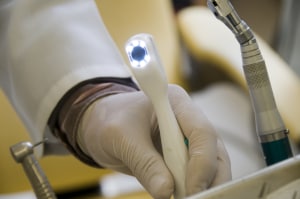Minimally Invasive Restorative Dentistry In Toledo
At Our Dental Office in Sylvania

The saying “less is more” is especially true with minimally invasive restorative dentistry. At Dental Health Associates, we use this relatively new approach to preserve as much of the original bone, tissue and tooth as possible while removing the portions that are diseased. Another important piece of minimally invasive restorative dentistry is using modern dental materials that are long-lasting to reduce the need for future repair.
Why Minimally Invasive Restorative Dentistry Is Important
Removing tooth structure during restorative treatment compromises the integrity and strength of the tooth. The more tooth structure that is removed, the greater the chances are of future fracture and other dental complications. Using minimally invasive techniques to detect decay or damage, remove it and repair the tooth is critical to preserving the tooth’s integrity and preventing the need for more complex repair in the future. Modern techniques allow our dentists to provide better and longer-lasting patient care.
Some examples of minimally invasive restorative dentistry procedures include:
- Sealants, which are generally made from a plastic resin and act as a barrier against plaque, acid and decay. They fit into the tiny grooves and crevices of the tooth surface. No drilling or cutting of the tooth is required.
- Mini dental implants, which are good for patients that do not have enough jawbone to support a conventional implant and are looking for a conservative implant solution. Mini dental implants do not require bone grafting and are therefore less complex than other dental implant treatments.
- Inlays and onlays to replace traditional fillings and conserve more of the tooth.
- Some periodontal treatments that are moderate in nature and avoid the trauma of conventional periodontal treatment.
- Teeth whitening to improve the color of teeth that are structurally sound without the need for restorations like porcelain crowns.
- Minimal prep veneers that can be placed over the teeth to improve their appearance without removing tooth structure.
- Dental lasers, which are used to remove decay and bacteria from teeth and gums.
- Air abrasion, which is used to remove decay instead of a traditional drill and may not require anesthesia.
- Bite guards that protect teeth at night from grinding (bruxism) and prevent the teeth from becoming severely worn and eventually needing crowns or other restorations.
- Remineralization to restore minerals to the teeth. The process often includes fluoride treatment.

Many of these minimally invasive procedures do not require anesthetics. Please discuss these options with your dentist to determine if you are a candidate for minimally invasive restorative dentistry. It’s just one more reason that “It Never Hurts to Smile” Contact our Sylvania office to schedule a consultation today!


